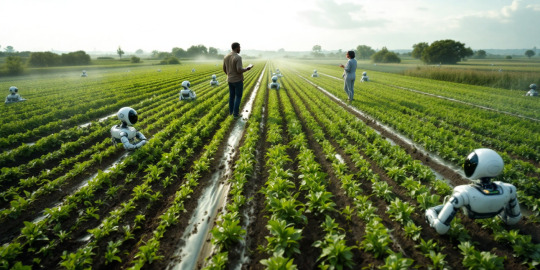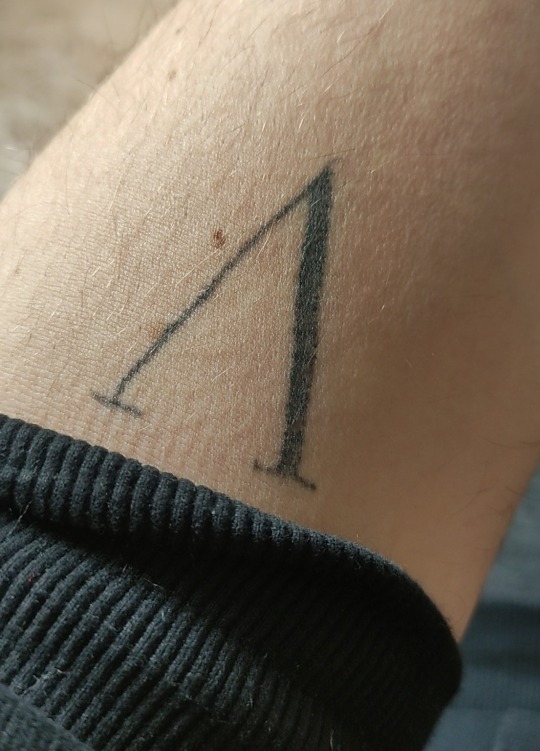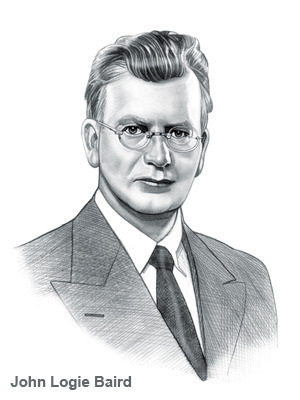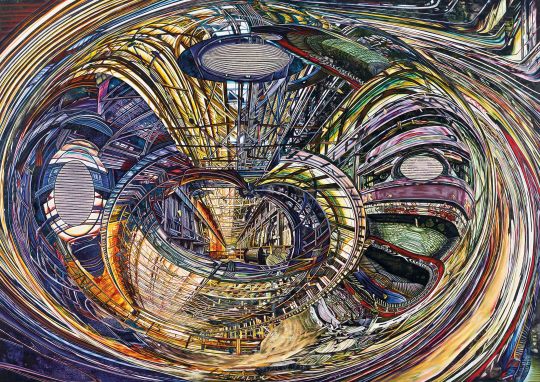#StereoVision
Explore tagged Tumblr posts
Text
Innovative Industrial Cameras for Robotics and Process Automation to Take Center Stage at Stand 6-36 Industrial cameras are indispensable for automation - whether with 2D, 3D or AI Detecting the smallest errors, increasing throughput rates, preventing wear – industrial cameras provide important information for automated processes. IDS will be demonstrating which technologies and products are particularly relevant at SPS / Smart Production Solutions in Nuremberg, Germany, from 12 to 14 November. If you want to experience how small cameras can achieve big things, stand 6-360 is the right place to visit. IDS presents a wide range of applications, from visualisation to picking and OCR Around 1,200 companies will be represented in a total of 16 exhibition halls at the trade fair for smart and digital automation. IDS will be taking part for the first time, focussing on industrial image processing for robotics, process automation and networked systems. Philipp Ohl, Head of Product Management at IDS, explains: "Automation and cameras? They go together like a lock and key. Depending on the task, very different qualities are required – such as particularly high-resolution images, remarkably fast cameras or models with integrated intelligence." Consequently, the products and demo systems that the company will be showcasing at SPS are highly diverse. The highlights of IDS can be divided into three categories: 2D, 3D and AI-based image processing. The company will be presenting uEye Live, a newly developed product line. These industrial-grade monitoring cameras enable live streaming and are designed for the continuous monitoring and documentation of processes. IDS will also be introducing a new event-based sensor that is recommended for motion analyses or high-speed counting. It enables the efficient detection of rapid changes through continuous pixel-by-pixel detection instead of the usual sequential image-by-image analysis. With over 25 years of experience, IDS is one of the key players in the image processing market In the 3D cameras product segment, IDS will be demonstrating the advantages of the new stereo vision camera Ensenso B for precise close-range picking tasks as well as a prototype of the first time-of-flight camera developed entirely in-house. Anyone interested in robust character recognition will also find what they are looking for at the trade fair stand: Thanks to DENKnet OCR, texts and symbols on surfaces can be reliably identified and processed. IDS will be exhibiting at SPS, stand 6-360. More information: https://en.ids-imaging.com/sps-2024.html
#AI#Development#English#Events#General#Hardware#IoT#2024#Automation#Camera#Ensenso#IDSImaging#Nuremberg#SPS#StereoVision#uEye#Vision
0 notes
Text


Cats and kittens on small step ladder, captured in the Coppin garden, c. 1905. Coppin collection, State Library of Victoria.
Photo appears to have been taken on a stereo camera for 3D viewing. GIF created to demonstrate effect of 3D cat viewing.
#state library of victoria#black and white#cat#cats#victoria#stereovision#stereo photography#1900s#pile of cats
1 note
·
View note
Text



14th June 1946 John Logie Baird, inventor of the first television, died.
Much has been said about Baird, some claim that due to the fact his version of the Television did not get taken up that he is not actually the “real” inventor. However without Baird’s innovations Television might not have been taken up , or come about as it did at this time in history.
Even as a child, Baird—who was born in Helensburgh, Scotland—showed great aptitude for innovation. As a youngster, he facilitated easier communication with a few of his best friends by setting up a rudimentary telephone exchange from his bedroom that would allow him to quickly connect with his buddies.
Baird used whatever items he could find to begin building a prototype for his mechanical television, including an old hatbox, some bicycle lights, a pair of scissors, darning needles, glue, and sealing wax.
The first public demonstrations were in Selfridges in 1925, The store sent out a circular, which stated:
Selfridge’s
Present the First Public Demonstration of Television
In the Electrical Section (First Floor)
Television is to light what telephony is to sound-i
t means the INSTANTANEOUS transmission of
a picture, so the observer at the “receiving”end can see,
to all intents and purposes, what is a
cinematographic view of what is happening
at the “sending” end.
Over the next several years, Baird continued to make improvements to his televisor, and kept increasing the distance that it could transmit content. In 1927, he managed to transmit an image a total of 438 miles between London and Glasgow.
On February 9, 1928, his Baird Television Development Company produced the first transatlantic television broadcast, from London to New York.
Even with all those firsts, Baird kept pushing for more. On August 10, 1928, he demonstrated the first 3D television, which he called “stereovision.” “By applying the stereoscope principle to television, it has now become possible to transmit television images with all the appearance of depth and solidity; and, by a further combination of colored television with stereoscopic television, the complete illusion of images in natural colors, and with depth and solidity becomes possible,” wrote the Radio Times in November of 1928. “All this has been recently demonstrated in the Baird Laboratories.” He dreamed of big-screen TVs with high-definition pictures.
Baird wanted to televise ‘live’ sport in cinemas, and in 1931, he invented a TV camera for 'outside broadcasts’.
Logie Baird died at Bexhill-on-Sea, East Sussex on June 14th 1946 aged 57.
Pics are the man himself, his grave at Helensburgh Cemetery and a memorial window at at West Kirk in the town.
11 notes
·
View notes
Text
Albinism
Albinism is a disease that causes a defect in the normal synthesis or transport of melanin. There are a couple different types, but the main distinction is the difference between oculocutaneous albinism (OCA) and ocular albinism.
Oculocutaneous Albinism
OCA is caused by an autosomal recessive mutation. There are seven different mutations that can cause albinism, though OCA1 to 4 are the common ones (with OCA2 being the most common). All of these different mutations affect the melanin pathway (the chemical reaction steps to turn phenylalanine into melanin).
OCA1 is caused by a mutation in the tyrosinase gene, which causes a lack of an enzyme in the melanin production pathway. There are actually two types of OCA1, with one having no tyrosinase, and the other having reduced tyrosinase. OCA1 is the most extreme form of albinism, which gives a person very pale skin, white hair, and light eyes.
The OCA2 gene (located on chromosome 15) encodes for the P protein, which is a transporter of a melanin precursor. This gene also has a large role in the color of iris a person will have. Those with OCA2 will have light skin, lighter brown or blond hair, and light colored eyes.
So basically, someone with a defect in either one of the transporters or enzymes of the pathway will not be able to have their melanocytes produce normal melanin. This leads to pale skin, white hair, and light-colored eyes (but it is a spectrum depending on the exact type).
Ocular Albinism
Ocular albinism is an X-linked mutation (a portion of the X chromosome is mutated). This means it affects males more than females. It causes loss of pigmentation in the iris. OA1 is the most common, and is associated with uncontrolled eye movements. OA2 is associated with color and night blindness. There is also a third type that is associated with deafness, but sometimes that also happens with OA1.
A fun fact: there is a type of albinism that only affects non-human animals called leucism. This leads to a partial loss of pigmentation that affects the hair, scales, feathers, and skin of the animal, but not the eyes. You can see this in white lions that have normally-colored eyes and noses.
Albinism and Eyesight
Now onto the role melanin plays in eye function. Albino people have poor eyesight as a result of their melanin deficiencies. But why? We're going to have to go into some eye stuff to answer this question.
So your retina has two parts: temporal and nasal (two halves, one closer to your temple and one closer to your nose). The input from each half is processed with the opposite half from the other eye. I have another post that explains this better. So, the optic nerves meet at the optic chiasm, with some fibers staying on the same side, and other fibers crossing over. Mammals with forward-facing eyes have larger temporal retina than mammals with lateral-facing eyes (like a guinea pig). About half of the optic fibers also remain uncrossed at the chiasm because of this.
Most people with albinism have almost all of their fibers cross at the chiasm, which is essentially a misrouting of very important sensory information. The eye structure is also changed with albinism, as most albino people have poorly formed fovea (the depression in the center of the retina where vision is the sharpest). They also have more blood supply than normal to the foveal area (it is supposed to be avascular). The retinal macula is usually poorly developed and there is a reduction in cone density (what allows you to see color).
Stereovision is also impaired, which is the ability to discern three-dimensional information about objects using the difference between the inputs from each eye. Those with albinism are also more likely to have nystagmus (involuntary eye movement) and strabismus (crossed eyes).
Albinism and Hearing
Now, onto the ear. The eye and ear are very intimately connected. The ear lets the eye know where to look for threats. This means that the visual and auditory spaces within the brain interact. Fun fact: when blind people are asked to localize sounds, the visual cortex is more engaged than the auditory cortex. Albino animals have fewer binaural cells, and more difficulty visually locating the source of sounds. A lot of the stuff related to this goes beyond the scope of what I want to explain here, but just understand that melanin is important for the development of both the auditory and visual systems of the brain.
Albinism and Immune Function
Finally, I want to discuss the immune system. Melanocytes are important cells for immune function, and release a lot of immune-promoting factors. For some reason, a lot of people think of those with albinism as having weak immune systems or being sickly. If you'll notice what I said earlier about the cause of albinism, it is a lack of transporters or enzymes in the melanin pathway. Not the lack of melanocytes. People with albinism still have these cells, it is only their ability to produce melanin that is impaired.
However, there are immune conditions that affect melanocytes, such as Chediak-Higashi syndrome. This is an autosomal recessive disorder that affects lysosomal trafficking proteins, and causes lysosomal function to be impaired. People with this disease will have frequent infections, platelet function impairment, as well as albinism. This means that albinism does not cause immune deficiency, but is a symptom of conditions that also affect the immune system.
#medicine#med student#medical school#med studyblr#med school#character traits#biology#medical writing#albinism#ocular posting#immune system
25 notes
·
View notes
Text
once again in posts I make every week, I really seriously need to get my eyes checked out. I have two and they both technically function but they absolutely will not resolve into stereovision, I either get one image from one eye or two separate images that won’t overlap. my vision actually improves, like dramatically, when I tape one of them shut. I don’t think it’s supposed to work like that
I know why this problem developed in the first place, it’s congenital, but I don’t know why it has recently gotten so much worse, and that’s worrying
9 notes
·
View notes
Text
Optimizing Global Shutter for Agricultural Robotics

As agricultural technology advances, the push for more efficient, accurate, and automated farming solutions grows stronger. Have you ever wondered how robots can navigate vast fields with precision, even in changing light conditions? How do they identify crops, detect pests, or measure soil quality without the risk of blurry images or missed details? The answer lies in optimizing global shutter cameras for agricultural robotics. But how does a camera designed for industrial and scientific purposes impact the future of farming?
Today, precision farming is more reliant on robotic systems that need to perform detailed tasks like crop monitoring, weed detection, and soil analysis. However, these tasks often take place in environments where lighting varies and the speed of the robots can be fast—leading to challenges with traditional cameras. Let’s dive deeper into how global shutter cameras are enhancing agricultural robotics, solving key pain points, and helping farmers achieve better results.
Why Traditional Cameras Struggle in Agricultural Robotics
In many agricultural environments, traditional rolling shutter cameras simply can’t keep up. When a robot moves quickly through a field or works in changing light conditions—such as transitioning from sunlight to shadow or working under tree canopies—traditional cameras may struggle to capture clear, distortion-free images. These issues are caused by the way a rolling shutter operates, scanning the image frame line by line from top to bottom, which can result in "motion blur" or distorted images if the subject is moving quickly.
This is where the global shutter camera shines. Unlike rolling shutters, a global shutter captures the entire image at once, eliminating motion distortion. Whether it’s a drone flying over crops or a robotic arm inspecting plants, the global shutter ensures that the camera captures sharp, undistorted images regardless of the subject’s speed or lighting changes.
Global Shutter Camera: The Technology That Powers Precision
A global shutter camera works by capturing an entire image simultaneously. Every pixel is exposed to light at the same time, which prevents motion blur, even when the camera or its subject is in motion. This simultaneous exposure and capture are ideal for fast-moving agricultural robotics that need to gather data on crops, detect diseases, or even monitor the growth of plants in real-time.
Here’s how global shutter cameras are optimizing agricultural robotics:
Real-Time Imaging for Faster Decisions With global shutter cameras, agricultural robots can make decisions instantly. Robots scanning the field for weeds or pests rely on fast, accurate visual data to navigate. A rolling shutter would introduce motion artifacts, leading to missed or incorrectly identified objects. The global shutter, by capturing an entire frame at once, ensures high-quality, precise data collection in real time.
Improved Low-Light Performance Agricultural robots often work early in the morning or late in the day, when lighting conditions can be suboptimal. Global shutter cameras excel in these conditions, providing crisp, clear images with minimal noise, even under low light. This allows agricultural robots to operate at any hour, maximizing efficiency and making the most of available daylight.
Enhanced depth perception and 3D mapping Many robots use stereovision to map out the terrain, detect obstacles, and evaluate the layout of crops. Global shutter cameras can synchronize with one another to provide more accurate depth perception, creating better 3D models of the field. This is essential for tasks like row-level navigation, where a robot needs to understand its environment in detail to avoid damaging crops.
Increased durability and versatility Agricultural robotics are often exposed to challenging environments—dust, rain, and extreme temperatures. Global shutter cameras, particularly those designed for industrial use, tend to be more rugged and versatile than their rolling shutter counterparts. They can operate reliably in harsh conditions, offering longer lifespans and reduced downtime for farmers.
Improved Image Quality in High-Speed Operations Whether it’s drones flying over vast fields or robotic harvesters moving swiftly through rows of crops, speed is essential in modern agriculture. Global shutter cameras capture high-speed action without the motion blur, making them ideal for fast-moving robotic applications. This results in better-quality data and more efficient performance, reducing the need for recalibration or rework.
Addressing the Pain Points: Why Farmers Should Care
Farmers are constantly seeking solutions that increase yield, reduce operational costs, and improve sustainability. Here’s how global shutter cameras are directly addressing key pain points in agriculture:
Inconsistent Data Collection Without reliable image data, agricultural robots can miss critical details or misinterpret crop conditions. Global shutter cameras provide consistent, high-quality images that are crucial for the robot's vision systems to work correctly. Whether identifying the onset of disease or spotting weeds among crops, clear images mean better decision-making.
Slow processing and inefficiency In agriculture, time is money. Global shutter cameras enable faster image processing by providing distortion-free images, which eliminates the need for complex image correction algorithms. This reduces processing time and allows robots to complete tasks more quickly, enhancing overall operational efficiency.
Varying Lighting Conditions With global shutter cameras, lighting no longer presents a challenge. Farmers can count on their robotic systems to deliver clear, reliable results, even during dawn or dusk when light levels are constantly changing.
High Maintenance Costs Poor image quality or sensor issues due to light distortion can lead to more frequent repairs and maintenance for agricultural robots. Global shutter cameras are designed to provide long-term reliability, reducing maintenance costs and keeping farming operations running smoothly.
The Future of Agricultural Robotics: How Global Shutter Cameras Fit In
As agricultural robotics evolve, the need for more precise, faster, and reliable data grows. By leveraging global shutter cameras, robotics in agriculture can operate more efficiently, deliver more accurate data, and enable smarter farming techniques. From autonomous drones scouting fields to robotic harvesters analyzing crop health, global shutter technology is revolutionizing how we approach food production.
The future of agriculture will demand even more integration of camera technology. Robotics will not only gather data but will also be able to analyze it in real time to make immediate decisions about irrigation, pest control, and harvesting. The precision and reliability that global shutter cameras provide will be pivotal in this transformation, ensuring that these systems operate with minimal error and maximum efficiency.
Take your agricultural robotics to the next level with global shutter technology.
Are you ready to enhance the capabilities of your agricultural robotics with the power of global shutter cameras? Explore the possibilities of clearer, faster, and more reliable imaging in your operations today. Whether you're looking to upgrade your current systems or develop new robotic solutions, integrating global shutter cameras is the next step toward precision farming and better results.
If you’re interested in learning more or seeing how global shutter cameras can be implemented in your robotic systems, feel free to contact us. Let’s work together to optimize your agricultural robotics for success!
0 notes
Text
Published Paper of Advances in Vision Computing: An International Journal (AVC)
Paper Title: EDGE DETECTION ALGORITHM FOR YORUBA CHARACTER RECOGNITION
Authors: Yekeen S.A and Ibiyemi T.S Department of Electrical and Electronics Engineering, University of Ilorin, Kwara State, Nigeria
Abstract: Digital image processing for pattern recognition involves several processing and pre-processing steps. Edge detection stands a great position for accurate pattern recognition most especially in character recognition system. Many edge detection techniques were implemented with convolution mask and based on approximations to differential operators. For efficient Yoruba character recognition, compass edge detection algorithm was developed to enhance the recognition rate of Yoruba character. The algorithm developed achieved 0.923 edge detection error rate. The level of accuracy will have been better if noise removal or reduction steps were included in the algorithm.
Keywords: Edge detection, compass edge detector, pattern recognition. Segmentation
Volume URL: https://airccse.org/journal/avc/current.html
Pdf URL: https://aircconline.com/avc/V5N4/5418avc01.pdf
#CallForPapers #callforsubmissions #researchpaper #journal #researchpaper #ResearchScholar #researchers #journalism #publication #computervision #imageprocessing #patternrecognition #machinevision #DocumentImaging #MotionTracking #StereoVision #biometricsystem #machineintelligence #database #SpeechRecognition #MobileImaging #RoboticVision #machinelearningalgorithms #MachineLearning #DeepLearning
0 notes
Text

'Yule' now 'Mayday' and soon 'July 4th Independence Day' tree. It was 82f/27c Sunday. Took a snap of her in early summer sun. She's happily in da corner very much in business. Speaking of housekeeping. Went to hardware store plaster and such. Sealing the cracks from our Earthquake. Post-op eyes has me seeing everything in 8K holographic stereovision. Almost left damage as is. Gives da digs apocalyptic character. 'Then I saw it with new eyes.' Good grief! I'm sealing and painting.
0 notes
Text

Not my best work, but it was my first tattoo ever, done in handpoke (or stick and poke) method. What deserves mentioning is that I was very John-Keel-like that day, because I was a day after an eyelid surgery, my right eyesocket was swollen, vision blurred... All I wanted was to make myself happy and try and draw a 'V' on me with a red marker and after realising I drew a perfect one, I decided to go for it. A first ever tattoo and without stereovision.
The next one I'm doing is left handedly (I'm a rightie) Summoning/Guarding Dark on my right forearm. Same technique.
Okay I need to get this off my chest
Terry Prachett was the coolest fucking dude who ever lived and honestly the world is a lesser place without him in it.
Dude wrote what is arguable the greatest fantasy series ever, never, ever pulled his punches with what he wrote. He could make you laugh, cry, and sob like a little bitch in like 4 pages.
He made a mod for Oblivion because he wanted to research goblins for one of his books.
He was knighted by the crown, and proceeded to learn how to Smith, dug up his own ore and forged a STAR METAL SWORD
He wrote in such a brilliant, elegant style that perfectly flowed in such a way that it made his books feel long and short at the same time. His prose, his wording, his ability to sneak in jokes.
I can not understate that Sir Prachett changed how I feel about the world. I wish I had started reading his books sooner. That shall remain my greatest regret in life.
509 notes
·
View notes
Text
H. Sridhar, the man who sculpted A R Rahman's sound.
H. Sridhar, the man who sculpted A R Rahman’s sound.
H. Sridhar – photo courtesy – Facebook Fan Page It was probably in 1992 when my musician friend Mark Sarma walked into my house with a cassette around 7.30 pm. Sarma, Shekar, and I were often jammin’ in either Shekar’s house or mine. Shekar is still a whiz kid on the keyboards and can persistently drive you to perfect your art! Sarma is more of a laid-back and easygoing instinctive guitarist and…

View On WordPress
#A M Recording studio#A R Rehman#Ahuja amps#Chinna Chin Aasai#compression#H. Sridhar#Jingles by Rahman#Panchathan#Pradeep Govind#Recording#StereoVision
0 notes
Photo

Mañana se clausura la genial #exposición #StereoVision de @dralderete en la galería @lafiambrera. No perdáis ocasión de ir a verla. Es espectacular... ¡Y en #3D!!! #art #gallery #arte #illustration #opart #instaart #igers #igersmadrid #blogger #travelblogger #artblogger #retro #poster #MarmotayPanda #Wanderlust #culture #pop #horror #TheCramps #music #icon (en La Fiambrera)
#pop#music#poster#3d#gallery#igers#instaart#marmotaypanda#opart#stereovision#retro#wanderlust#arte#artblogger#travelblogger#illustration#thecramps#igersmadrid#culture#art#horror#icon#exposición#blogger
2 notes
·
View notes
Photo

Set this up when I first moved #halloween #skull #eyeball #flower #black #beer #localbrew #chicago #hell #michigan #necromangocon #stereovision #dogfishhead #beermeow #beer #halloweendecor #spookykitchen #homehaunt https://www.instagram.com/p/B1wY0wfAk5g/?igshid=1fxkeb7j4zrio
#halloween#skull#eyeball#flower#black#beer#localbrew#chicago#hell#michigan#necromangocon#stereovision#dogfishhead#beermeow#halloweendecor#spookykitchen#homehaunt
0 notes
Photo

House of Wax
1 note
·
View note
Text



14th June 1946 John Logie Baird, inventor of the first television, died.
Much has been said about Baird, some claim that due to the fact his version of the Television did not get taken up that he is not actually the “real” inventor. However without Baird’s innovations Television might not have been taken up , or come about as it did.
Even as a child, Baird—who was born in Helensburgh, Scotland—showed great aptitude for innovation. As a youngster, he facilitated easier communication with a few of his best friends by setting up a rudimentary telephone exchange from his bedroom that would allow him to quickly connect with his buddies.
Baird used whatever items he could find to begin building a prototype for his mechanical television, including an old hatbox, some bicycle lights, a pair of scissors, darning needles, glue, and sealing wax.
The first public demonstrations were in Selfridges in 1925, The store sent out a circular, which stated:
Selfridge’s
Present the First Public Demonstration of Television
In the Electrical Section (First Floor)
Television is to light what telephony is to sound-
It means the INSTANTANEOUS transmission of a picture, so the observer at the “receiving” end can see, to all intents and purposes, what is a cinematographic view of what is happening at the “sending” end.
Over the next several years, Baird continued to make improvements to his tele visor, and kept increasing the distance that it could transmit content.
In 1927, he managed to transmit an image a total of 438 miles between London and Glasgow.
On February 9, 1928, his Baird Television Development Company produced the first transatlantic television broadcast, from London to New York. Even with all those firsts, Baird kept pushing for more. On August 10, 1928, he demonstrated the first 3D television, which he called “stereovision.” “By applying the stereoscope principle to television, it has now become possible to transmit television images with all the appearance of depth and solidity; and, by a further combination of colored television with stereoscopic television, the complete illusion of images in natural colors, and with depth and solidity becomes possible,” wrote the Radio Times in November of 1928. “All this has been recently demonstrated in the Baird Laboratories.” He dreamed of big-screen TVs with high-definition pictures.
Baird wanted to televise ‘live’ sport in cinemas, and in 1931, he invented a TV camera for ‘outside broadcasts’.
John Logie Baird died on this at Bexhill-on-Sea, East Sussex in 1946 aged 57.
14 notes
·
View notes
Photo

Jin Meyerson — Stereovision (oil on canvas, 2017)
152 notes
·
View notes
Text


#CallForPapers#callforsubmissions#ResearchScholar#journal#researchpaper#research#researchers#journalism#publication#vision#computervision#imageprocessing#patternrecognition#machinevision#DocumentImaging#motiontracking#StereoVision#Biometrics#machineintelligence
#database#SpeechRecognition#MobileImaging#roboticvision
#machinelearningalgorithms#machinelearning#DeepLearning
Submit Your Research Articles...!!!
Advances in Vision Computing: An International Journal (AVC)
ISSN : 2349-2201
Submission Deadline : September 28, 2024
Contact Us
Paper Submission Link:
Wikicfp Link: http://www.wikicfp.com/cfp/servlet/event.showcfp...
0 notes